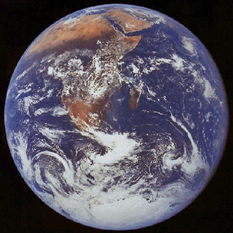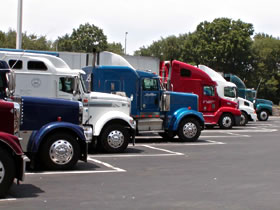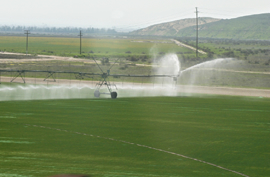
 Global warming isn’t just a theory anymore. Left unchecked, the economic and environmental consequences of global warming on Washington and the rest of the West Coast will be severe and far-reaching. That’s why I, along with Governor Schwarzenegger of California and Governor Kulongoski of Oregon, have committed to a joint effort to reduce greenhouse gas emissions in our region. » Facts about the West Coast Governors’ Initiative
Global warming isn’t just a theory anymore. Left unchecked, the economic and environmental consequences of global warming on Washington and the rest of the West Coast will be severe and far-reaching. That’s why I, along with Governor Schwarzenegger of California and Governor Kulongoski of Oregon, have committed to a joint effort to reduce greenhouse gas emissions in our region. » Facts about the West Coast Governors’ Initiative
What is Global Warming?
Earth’s atmosphere naturally traps “greenhouse” gases such as water vapor, carbon dioxide and methane. In recent centuries, however, the amounts of these gases in our atmosphere have increased dramatically, largely due to human activities including emissions from automobiles and other vehicles, power plants, factories, and buildings. As a result, our planet is getting warmer. » Chart: Global Temperatures Changes 1880—1990 (PDF 38k)
 Since 1900, Earth’s surface has warmed about 1.1° Fahrenheit, and scientists are observing related changes such as decreases in snow cover and glacial ice, earlier onset of spring thaws, and altered rainfall patterns.
Since 1900, Earth’s surface has warmed about 1.1° Fahrenheit, and scientists are observing related changes such as decreases in snow cover and glacial ice, earlier onset of spring thaws, and altered rainfall patterns.
Unless we reduce emissions, global average temperature is projected to increase 2.7° to 10.4° Fahrenheit by 2100 (compared to 1990). This is expected to cause additional rain and snowfall in some areas and drought in others. Temperatures will shift; some areas will be much warmer than they are today and others will cool dramatically. Average sea levels will rise due to the melting of the Arctic and Antarctic ice caps. » Frequently-asked questions about global warming
Effects on Washington
According to the University of Washington Climate Impacts Group, the Pacific Northwest is already feeling the effects of global warming. Average local temperatures increased about 1.5° F over the past 100 years and are expected to climb another 1° F every 10 years during this century.
As temperatures rise, we will see more flooding in winter and spring, and more water shortages and drought in late summer and fall. Rising sea levels will swamp our shores. There will be more frequent and severe landslides due to flooding and coastal erosion.
Diseases may increase, as warm weather fosters the spread of viruses, parasites and bacteria. We will lose forests as a result of fires, wind storms, and insect infestations. Salmon and other marine life will face extinction as ocean temperatures rise, streams dry up and habitats change.
 Less snow pack in the Cascades and elsewhere will result in lower flows in the Columbia River/Snake River system. This will lead to reduced hydropower, less water for irrigation, endangered salmon stocks, and less wetland habitat.
Less snow pack in the Cascades and elsewhere will result in lower flows in the Columbia River/Snake River system. This will lead to reduced hydropower, less water for irrigation, endangered salmon stocks, and less wetland habitat.
Key industries will be harmed. Power generation, forestry, agriculture, tourism, ski resorts, fishing, real estate and related industries are all vulnerable to the effects of global warming. Reduced water availability will result in growing conflicts over uses and limit our ability to meet the needs of a growing population.
» More about Combating Global Warming
| » Top ten things YOU can do to reduce global warming | » Calculate how much carbon dioxide your household emits |
Home
Governor Locke
- About the Governor
- Cabinet
- Senior Staff
- Executive Orders
- Proclamations
- Boards and Commissions
- Contact the Governor
The First Lady
News Room
About Washington
- Washington State Facts
- Photo Gallery
- The 50 State QuartersTM Program
- State Legislature
- Washington Courts
- US Census 2000
- Register to Vote